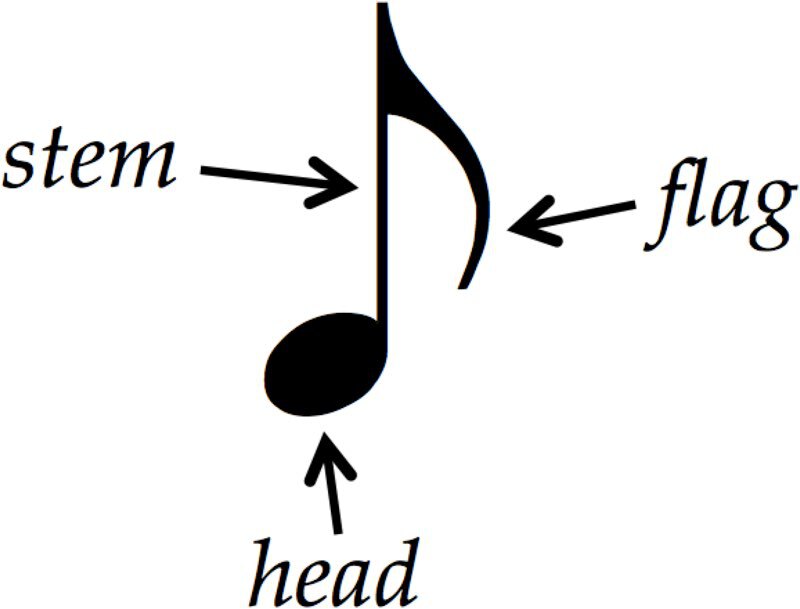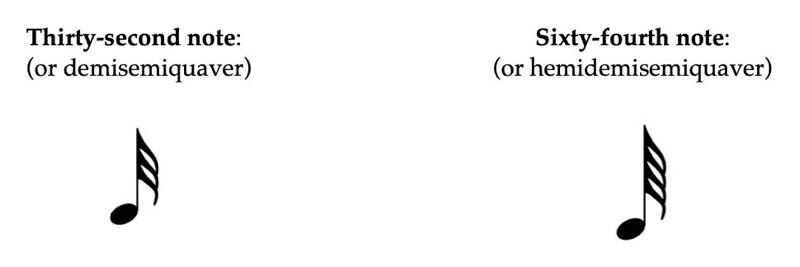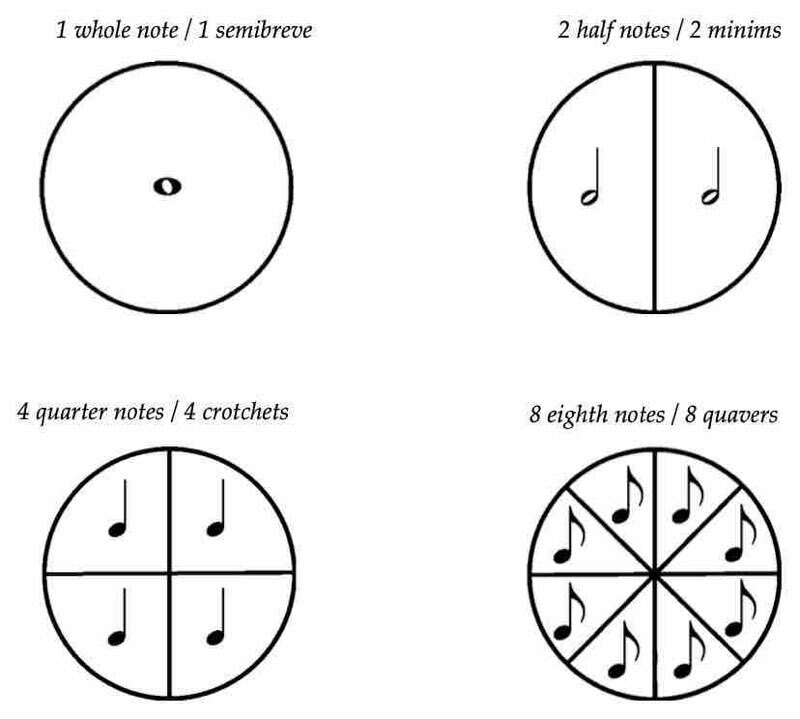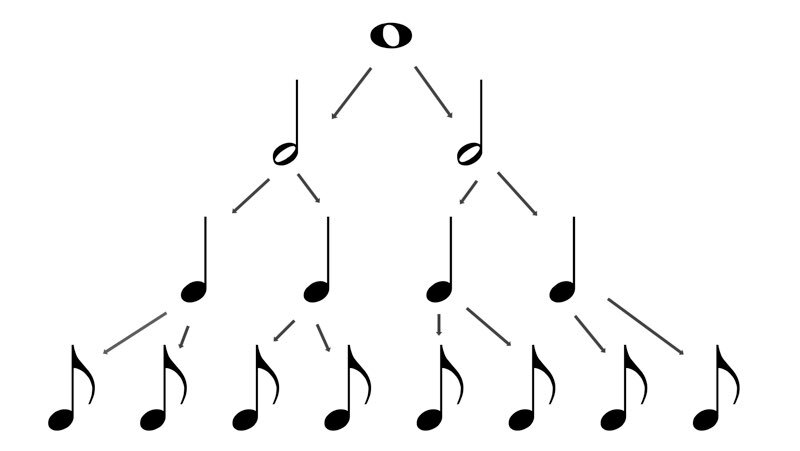The word ‘notate’
is from the Latin word notatus
meaning “to note down”
. Musical notation is a set of symbols, markings and characters that represent rhythm, pitch and other instructions to musicians. Just like we use letters, words and sentences to communicate in everyday language, we can communicate music through notation.
The basis of musical notation is the written note. A note is this symbol and it can consist of up to 3 parts: the head, the stem and the flag.
By changing any of the three parts of this symbol we can notate different durations, which are better known in music as note values
.
For example, this is the whole Note
(also known in British English terminology as the semibreve
):
The whole note, also known as the semibreve in British English.
It has neither a stem nor a flag, and its head is left empty rather than filled in. Relative to all other note values, this is the longest. But the exact amount of time it will be played for depends on various other factors, which we learn about later. For now, we are only concerned with the relative value
of every note–that is, the duration of a note in comparison to all others.
In fact, all other note values derive their names in relation to the whole note. This is the half note
(also known in British English as the minim
), and its duration is half of the whole note
:
The Half Note (or ‘Minim’ in British English)
This means that the duration of 2 half notes is equal to 1 whole note.
Next is the quarter note
(in British known as the crotchet
). The symbol is similar to the half note except that the head is filled in. Its value is of a quarter of a whole note:
The quarter note (or ‘Crotchet’ in British English)
And so, the duration of 4 quarter notes are equal to the duration of 1 whole note.
4 quarter notes equal 1 whole note.
Next comes the eighth note
(also known as the quaver
). Its relative duration is that of an eighth of a whole note. The symbol is similar to the quarter note but with the addition of the flag:
The eighth note (or the ‘quaver’ in British English).
And of course, 8 eighth notes are equal to one whole note:
8 eighth notes equal 1 whole note
Next comes the sixteenth note
(also known as the semiquaver
). Its relative duration is that of a sixteenth of a whole note. It looks similar to the eighth note except for the addition of a second flag:
The sixteenth note (or the ‘semiquaver’ in British English”
And 16 sixteenth notes are equal in duration to 1 whole note:
16 sixteenth equal 1 whole note
In theory, this pattern can go on indefinitely. If we were to discuss the next note, it would be half the duration of the previous one, and the symbol would have an added flag. The note after that would be half yet again, and its symbol would have yet another flag and so on and on.
The 32nd and 64th notes with flags added as needed
We’ll get into all the detail of how these work in music step-by-step in the coming lessons. For now, just keep in mind that the value of these notes in relation to each other never changes
.
One way of seeing this is to imagine a pie. If the full pie is the whole note, then half of it is a half note. If we split each half into two again, we get four quarter notes. Split them again and we get 8 equal parts (8 eighth notes) and so on, every time dividing by half.
How note values related to each other (in a pie)
One other way to visualize how note values relate to each other, and by far more common, is this pyramid, sometimes known as the note value tree
.
It shows how the whole note equals two half notes, which in turn both equal two quarter notes, and which in turn equal two eighth notes each.
Expert Tip: How to Memorize Note Value Symbols
Here’s a little exercise that will help you remember the symbols and their names.
Look at the chart of note values on this page and notice that from any note value to the one directly below it, the symbol has just one addition to it.
For example, for a whole note to become a half note, simply add the stem. For a half note to become a quarter note, simply fill in its head.
In other words, we only add one thing
to the note value to get the next symbol–the symbol that is half the value of the previous one. That one thing is either a stem, coloring in the head, or adding a flag.
Of course, this works in reverse as well. To double the note value (that is, to go up to the next note value in the chart), we take away one thing
from it. For example, take away the flag from an eighth note and you get a quarter note
Try this exercise on a separate sheet of paper. Draw a whole note and 1) Add a stem, 2) Color in its head, 3) Add a flag and 4) Add in a second flag. In four steps you went from a whole note to a sixteenth note. Now do it in reverse, draw a sixteenth note and change it into a whole note one step at a time. Write in pencil so that you can erase and adjust easily.















